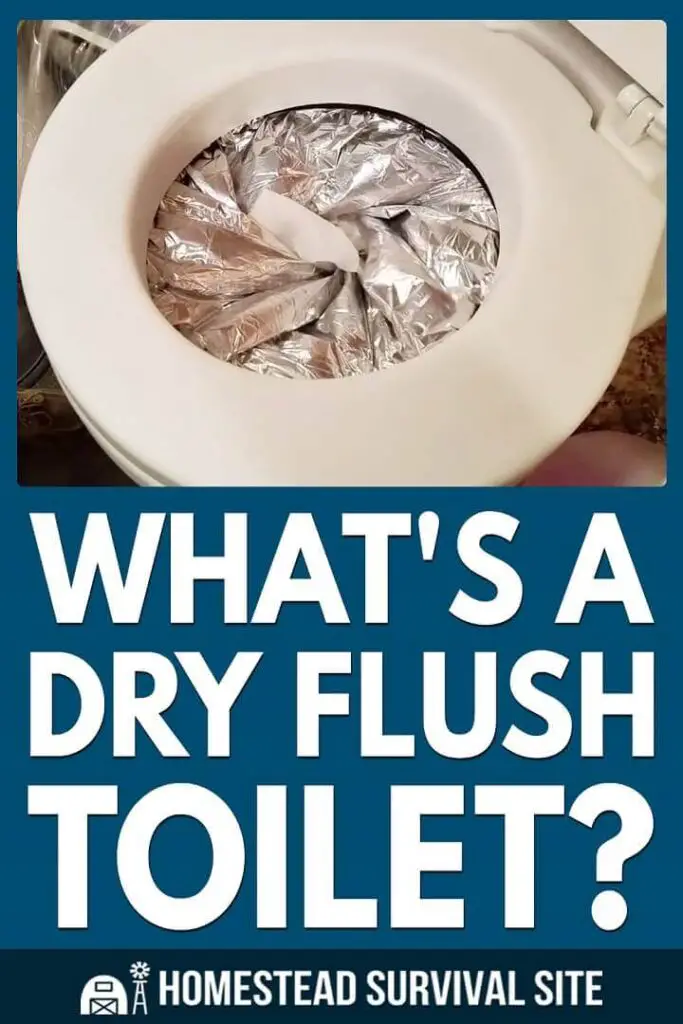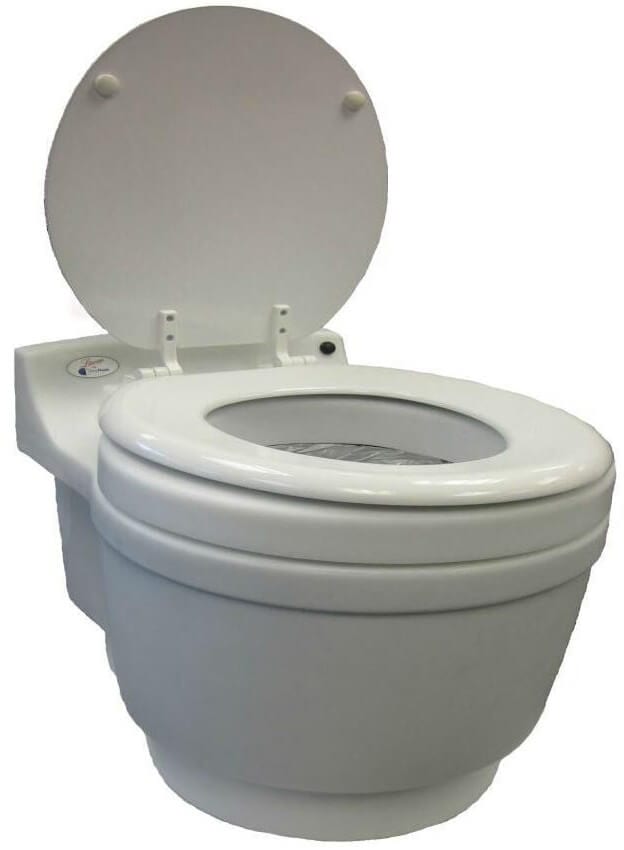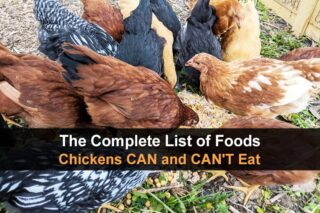Estimated reading time: 5 minutes

You may not realize it, but one of the biggest water wasters in your home is the toilet. According to the Environmental Protection Agency (EPA), about 30 percent of the average U.S. home's indoor water supply literally flushes down the drain. Typically, the older the toilet, the more water it uses. Toilets built before 1982 use five to seven gallons per flush. New toilets use about 1.6 gallons.
If you are thinking of living off the grid or perhaps hitting the road in a converted tiny home bus, you may have heard about dry flush toilets. They also work well for campers.
A dry flush toilet allows you to have a commode in your home without a sewage hook-up or a plumbing system. Although it has a similar appearance to a regular toilet, a dry flush toilet is lightweight and portable.
The idea of a waterless toilet is intriguing, but how does it work? Here’s how: A battery-operated motor (that can be recharged electrically) operates inside a small bucket beneath the toilet seat. When you flush the toilet, the motor turns the bucket, twisting the mylar liner that is inside the bowl.
Want to save this post for later? Click Here to Pin It On Pinterest!
The twisting tightly wraps the waste within the liner and holds it in a hidden receptacle under the seat. An airtight seal prevents leaking and odor. Then, a new liner unwraps in the bowl.
When the cartridge has about two more flushes left, a red line appears on the material as an alert. When the cartridge has run out of liners, you lift up the toilet seat and take out the bag containing the wrapped waste. Then you install another cartridge.
Ranging in cost from about $500 to $900, dry flush toilets can be easier and less expensive to use than a composting toilet. The Laveo Dry Flush Toilet is priced at $900 at CampingWorld.com. A comparable model by Villa is $989. on Amazon.

A three-pack of Laveo Portable Dry Flush Toilet refill cartridges sells for $104.95 on Amazon. The manufacturer claims that you can change a refill pack in about a minute and that you get about 17 flushes per cartridge. The three-pack includes a bag for disposal, rubber bands, twist ties, and instructions.
You may be wondering what you do with the used liners. They are not compostable, so you would have to dispose of them with your other non-recyclable and non-compostable trash. Landfills that accept baby and adult diapers will accept the sealed dry flush bags. On its website, the Laveo company states that its team is working on developing a biodegradable bagging system for its toilets.
How often does the battery need to be recharged? According to the Laveo website, the battery will last for at least 300 flushes before needing a charge.
Is a dry flush toilet a good choice for your home? Here are the pros and cons of using one.
Pros of a Dry Flush Toilet
- Uses no water.
- Easy to Use. All you need to do is change the cartridges. Bags are easy to handle.
- No chemicals required.
- Odorless.
- No venting, plumbing, or electrical hook-up needed.
- Simple to clean. No holding tank to clean. You discard anything that comes into contact with the waste when you change refills.
- No mess or odor. Less chance of leaks than with cleaning a chemical toilet, a bucket toilet, or a camping toilet.
- Lightweight and portable. A dry flush toilet weighs less than 30 pounds.
- Small size. A dry flush toilet works well in tiny bathrooms.
- No special toilet paper needed. Unlike other alternative toilets, you can use any type of toilet paper with a dry flush toilet.
- Small size. The toilet is a good option for tiny bathrooms.
Cons of a Dry Flush Toilet
- Ongoing liner expense. Refill liners are expensive to replace. The bags can run more than a dollar each.
- Require disposal. With a composting toilet, you must bury the waste. With a dry flush toilet, you must dispose of the bags of waste.
- Cartridges are not compostable.
- Must recharge battery. The toilet's battery must be recharged occasionally. You can accomplish this with a standard 120v outlet or with solar power.
- The battery is susceptible to below zero temperatures.
When you weigh the pros and cons, a dry flush toilet may be an excellent choice for an off-grid cabin, an RV, or a tiny home. The cost of the liners may make it prohibitive for a larger home or for more than one or two people’s use. However, if you strictly follow the “if it's yellow, let it mellow” rule at your house, you won't have to change the bags as often.
Here are some helpful videos to help you make your decision. In this video, a couple demonstrates the use of a dry flush toilet in their tiny house. And this site has a couple of videos made by the Laveo company that offer information on their dry flush toilets.
Like this post? Don't Forget to Pin It On Pinterest!










Hmm, well considering the method and costs, sounds more like a detached diaper. I’ll stick to low yield water toilets and composting. 👍